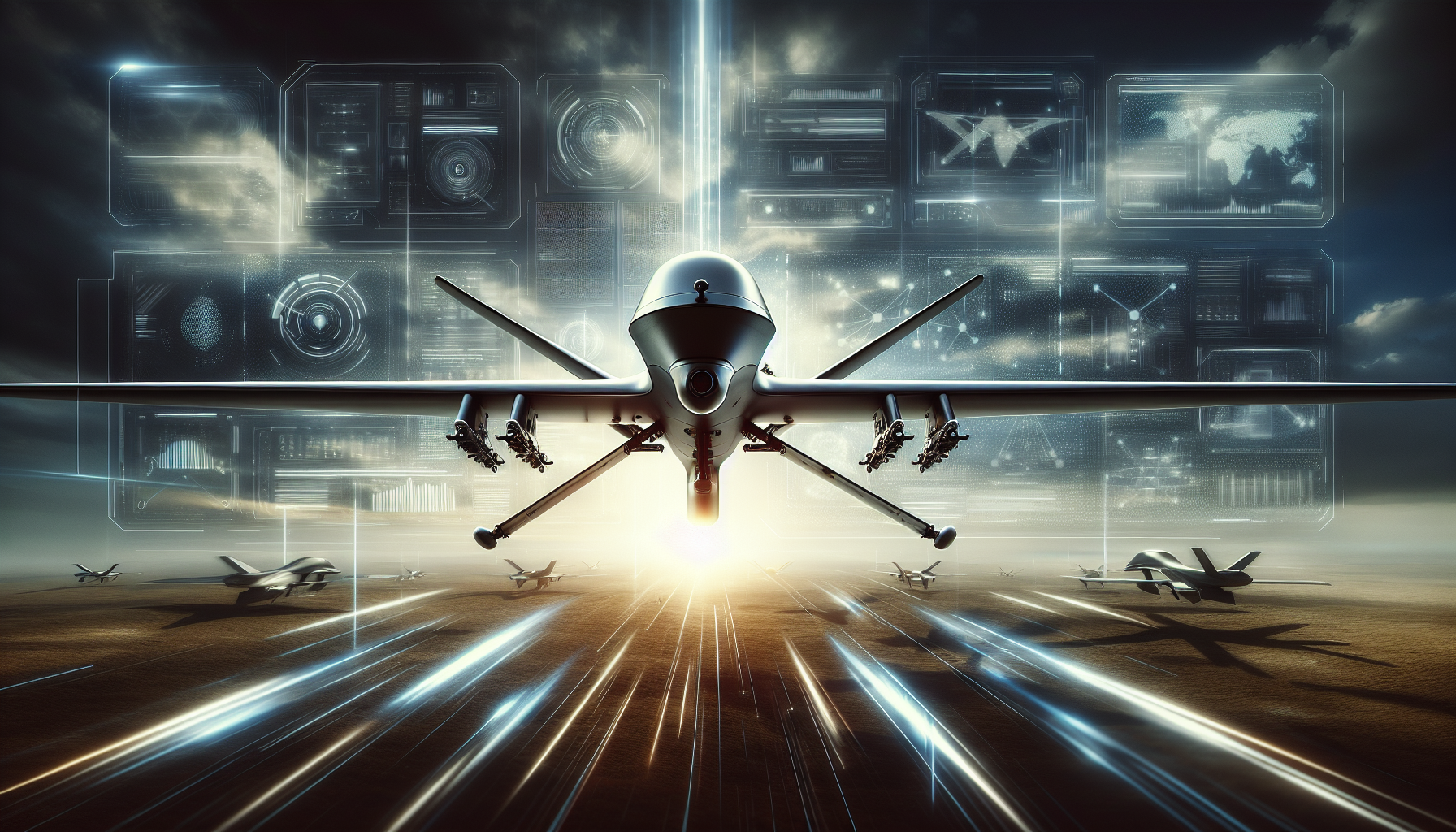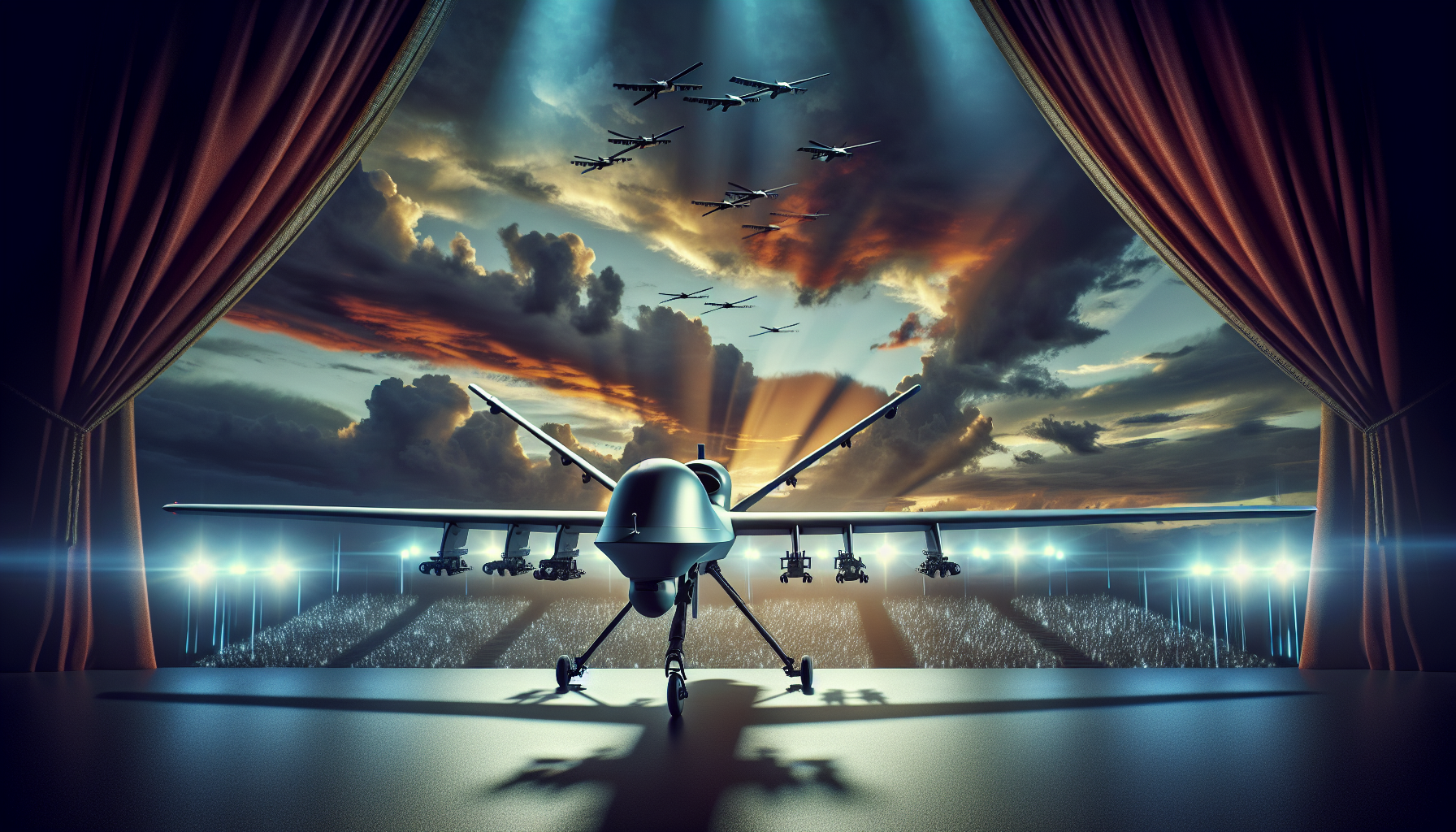The Pentagon’s 2026 budget, which allocates an unprecedented $179 billion for research, development, testing, and evaluation, marks a significant shift in military strategy. This funding is not directed toward traditional warfare assets such as jets or tanks; instead, it focuses on advanced technologies that will shape the future battlefield. As the military explores innovations such as drone swarms, hypersonic missiles, and artificial intelligence, it also prompts critical inquiries regarding the pace of development and the effectiveness of these investments.
This article aims to dissect the implications of this substantial R&D budget, distinguishing between classified and unclassified initiatives, and examining their potential impact on service members and taxpayers. By analyzing the strategic vision behind the Pentagon’s funding decisions, you will gain insight into how these advancements might redefine warfare and the challenges that may arise in their implementation. Ultimately, this exploration underscores the urgency of adapting to rapidly evolving defense needs in an increasingly complex global landscape.
Overview of the Pentagon’s $179 Billion Budget

Purpose of the Budget Allocation
The Pentagon’s allocation of $179 billion for the fiscal year 2026 primarily aims to propel the research, development, testing, and evaluation (RDT&E) of advanced military technologies. This significant investment seeks to modernize the U.S. military’s capabilities, ensuring preparedness for future conflicts in an evolving global landscape. The focus shifts from traditional hardware such as jets and tanks to innovative technologies like drone swarms, hypersonic missiles, and battlefield lasers. It reflects an urgent recognition that the nature of warfare is changing, and the U.S. military must adapt accordingly to maintain strategic advantages.
Historical Context of Military Spending
Historically, military spending in the United States has surged during periods of conflict, with significant peaks observed during the Cold War and post-9/11 eras. The most recent budget proposal appears to break with the traditional patterns by significantly emphasizing RDT&E, signifying a shift from large-scale procurement toward a model that values innovation and responsiveness. This paradigm reflects lessons learned from previous conflicts, where traditional platforms fell short against asymmetric threats, prompting a reevaluation of military spending priorities.
Comparison with Previous Budgets
When comparing this budget to previous allocations, one can observe a marked increase in RDT&E funding relative to overall defense expenditures. For instance, the RDT&E budget allocation has seen a substantial rise from around $65 billion in the early 2000s to nearly $179 billion in 2026. This wiki development trajectory underscores an urgent drive to prioritize future warfare strategies over legacy systems, emphasizing the need for continual innovation to face modern threats.
Research, Development, Testing, and Evaluation (RDT&E)
Definition and Importance of RDT&E
Research, development, testing, and evaluation (RDT&E) constitutes a critical component of the defense budget, encompassing the creation of new technologies, refinement of existing systems, and validation through rigorous testing processes. RDT&E underpins the military’s ability to adapt to new threats, ensuring that service members are equipped with the most effective tools for the job. In a rapidly shifting technological landscape, the importance of RDT&E cannot be overstated, as it facilitates innovation that could redefine the terms of engagement in warfare.
Breakdown of RDT&E Investments
A comprehensive breakdown of the RDT&E investments within the $179 billion budget reveals allocations across various technology domains, including cybersecurity, autonomous systems, and space-based capabilities. Notably, a substantial portion of this budget is dedicated to artificial intelligence and machine learning, indicating recognition of their significant role in future military operations. Investments are also made in biological defense, advanced materials, and quantum technologies—each representing an emerging frontier with the potential to enhance operational effectiveness.
Trends in Military R&D Funding
Recent trends in military R&D funding indicate a consistent prioritization of advanced and emerging technologies. The increased investment in areas such as drone swarm technology and hypersonic missile development reflects a strategic pivot toward anticipating future warfare’s needs. Simultaneously, the integration of AI and machine learning in R&D efforts signifies a commitment to harnessing these transformative technologies for military applications. This trend aligns with the broader objective of creating a responsive and agile military capable of addressing modern security challenges quickly.
Key Technologies and Innovations
Drone Swarm Technologies
Drone swarm technologies represent a significant advancement in military operations, enabling a coordinated group of unmanned aerial vehicles to conduct complex missions autonomously. These swarms can overwhelm adversarial defenses, gather intelligence, and deliver precision strikes with enhanced effectiveness. By leveraging advancements in artificial intelligence, the U.S. military aims to create more agile and adaptive combat environments where drone swarms can react in real time to dynamic battlefield conditions.
Hypersonic Missiles
Hypersonic missiles are another focal point of the Pentagon’s investment strategy, capable of traveling at speeds exceeding Mach 5 while maintaining maneuverability. This technology poses a formidable challenge to traditional missile defense systems, as their rapid speed reduces reaction time significantly. The U.S. aims to develop hypersonic capabilities to ensure deterrence against peer competitors and to maintain a technological edge in missile warfare.
Battlefield Lasers and Directed Energy Weapons
Battlefield lasers and directed energy weapons represent a transformative approach to military engagement, offering precision strikes with minimal collateral damage. These technologies promise cost-effectiveness, as they use electricity to generate high-energy beams for incapacitating or destroying targets. Their development signals a departure from conventional munitions, indicating a future where energy-based systems may dominate the battlefield.
Artificial Intelligence in Modern Warfare
AI-Driven Targeting Systems
Artificial intelligence plays an increasingly pivotal role in modern warfare, particularly through the development of AI-driven targeting systems that enhance precision and reduce the risk of collateral damage. By automating data analysis and target identification processes, these systems allow military personnel to make informed decisions rapidly. This integration of AI not only enhances operational efficiency but also shifts the decision-making paradigm dramatically.
Implications of AI for Tactical Decisions
The growing reliance on AI technologies necessitates a careful examination of the implications for tactical decisions on the battlefield. While AI can analyze vast amounts of data faster than human operators, it raises questions surrounding the reliability of algorithms in high-stakes situations. Moreover, the speed at which AI can process information may lead to rapid tactical shifts that must be managed carefully to avoid unintended consequences.
Ethical Considerations of AI Usage
The incorporation of AI in military operations introduces complex ethical considerations. Questions surrounding accountability for decisions made by autonomous systems and the potential for escalation due to misjudgments lead to critical ethical challenges. Ensuring that AI systems adhere to international humanitarian law while maintaining military efficacy remains an ongoing concern that demands serious attention from policymakers.
Budget Allocation: Classified vs. Unclassified Programs

Funding for Black Programs
A portion of the Pentagon’s budget is allocated toward classified programs, often referred to as “black programs.” These initiatives remain undisclosed to the public and Congress, making it challenging to evaluate their effectiveness and necessity. While proponents argue that confidentiality is vital for national security and competitive advantage, critics contend that such secrecy can lead to overspending and mismanagement, ultimately undermining transparency.
Transparency in Military Spending
The debate over classified funding highlights the need for greater transparency in military spending. Citizens and legislators alike have expressed concerns over how public funds are allocated, particularly in terms of accountability for projects that are not subject to public scrutiny. Enhanced transparency may foster more informed discourse surrounding defense spending and engender public trust, a crucial component of democratic governance.
Potential Risks of Secretive Budgeting
The risks associated with secretive budgeting practices are profound. Without public oversight, there is a potential for misallocation of resources, as classified programs may not necessarily align with broader strategic objectives. Additionally, the absence of accountability mechanisms can lead to a culture of unrestrained spending, which may ultimately detract from the military’s operational readiness and effectiveness.
Challenges and Concerns
Assessing the Speed of Technological Development
An inherent challenge lies in assessing the speed of technological development as it relates to military spending. The rapid pace of innovation can render previously allocated funds obsolete and necessitate continuous reallocation of resources. The Pentagon’s commitment to an agile budgetary approach is vital, yet it raises questions about the difficulty of keeping pace with a technology landscape that is ever-evolving.
Evaluating the Suitability of Invested Tools
Linked closely to the pace of technological development, evaluating the suitability of invested tools becomes paramount. The military must not only invest in cutting-edge technologies but also ensure that they meet operational requirements. This alignment requires ongoing dialogue between military strategists and technical experts to guarantee that resources enhance mission effectiveness rather than simply represent monetary expenditure.
Budget Overruns and Mismanagement
Another concern arises from the potential for budget overruns and mismanagement within RDT&E funding. Historical precedents have demonstrated that large-scale military projects can be plagued by delays and cost inflation, diverting attention away from timely technological advancements. Vigilant oversight is required to mitigate these challenges, ensuring that stakeholders remain collectively committed to accountability and prudent financial management.
Impact on Service Members

Training and Adaptation to New Technologies
The Pentagon’s commitment to technological advancements necessitates a parallel investment in training and adaptation for service members. As military personnel face new platforms and systems, comprehensive training programs are essential to maximize operational proficiency. The successful integration of technology relies heavily on the skills and adaptive capacity of service members, making this area a vital consideration in ongoing budget discussions.
Morale and Psychological Effects
The introduction of advanced technologies into military operations can have both positive and negative effects on morale and psychological well-being. On the one hand, enhanced capabilities can instill confidence in service personnel, knowing they are equipped with state-of-the-art tools. Conversely, the potential for reliance on technology may induce stress, particularly if personnel feel their roles are devalued or their decision-making authority overshadowed.
Readiness for Future Conflicts
Ultimately, the impact on service members translates into a heightened readiness for future conflicts. The successful implementation of new technologies will shape military effectiveness, making it essential for service members to be not only equipped but also psychologically prepared for emerging combat challenges. This readiness hinges upon a concerted effort to create an adaptable workforce capable of thriving under the complexities of modern warfare.
Public Perception and Taxpayer Concerns
Understanding Military Expenditures
Public perception of military expenditures remains a significant factor in shaping defense policy. Taxpayers often grapple with the complexities of understanding the necessity and impact of military spending, particularly with regard to RDT&E funding. Efforts to clearly communicate the strategic rationale behind these allocations can foster greater public engagement and support for defense initiatives.
Impact on Civilian Economy
One essential consideration is the impact of military expenditures on the civilian economy. High levels of spending can influence economic stability and growth, diverting resources from domestic priorities such as education and infrastructure. Striking a balance between national security needs and civil investments is crucial, requiring transparent budgeting processes that allow for informed discourse and decision-making.
Balancing National Security with Budget Sustainability
Achieving equilibrium between national security interests and budget sustainability represents a significant challenge for policymakers. As military spending continues to climb, particularly in RDT&E allocations, the urgency of ensuring long-term fiscal responsibility cannot be overlooked. Pragmatic decision-making must prioritize resource allocation in a manner that reinforces security while remaining considerate of broader societal needs.
Global Context of U.S. Military Dominance
Comparison with Other Nations’ Defense Budgets
To gain a nuanced perspective on the Pentagon’s budget, one must consider the context of global military spending. The U.S. maintains a defense budget significantly larger than that of any other nation, providing the capacity for extensive RDT&E investments. Global comparisons reveal both the U.S. intent to preserve military dominance and the necessity of understanding emerging threats from nations with increasing military capabilities.
Strategic Alliances and Partnerships
In an increasingly interconnected world, fostering strategic alliances and partnerships is critical to enhancing U.S. military capabilities. Collaboration with allied nations can expand the resource pool and technological base while enabling collective responses to global security threats. Sharing knowledge and resources will create a robust security architecture, essential for confronting contemporary challenges.
Responding to Global Security Threats
The landscape of global security threats has shifted dramatically, with the emergence of asymmetrical warfare and state-sponsored cyber threats necessitating a reimagining of military responses. The Pentagon’s investment in innovative technologies aims to fortify U.S. capabilities against these evolving risks. This proactive approach seeks to deter adversaries and engage potential threats more effectively, preserving national security in the face of complex challenges.
Conclusion
Summary of Key Points
In summarizing the key points of the Pentagon’s $179 billion budget for 2026, it becomes evident that the focus on RDT&E signifies a strategic and necessary shift in military priorities. Investments in advanced technologies, including drone swarms, hypersonic missiles, and artificial intelligence, underscore the urgency for modernization. However, the challenges of maintaining transparency, managing ethical considerations, and ensuring effective training for service members loom large.
Final Thoughts on Military Transformation
The discourse surrounding military transformation raises critical questions regarding the future of warfare. How the U.S. responds to the demands of modern conflict will define the effectiveness of its military apparatus. A commitment to adapting and innovating technologies, while balancing ethical and practical considerations, will be instrumental in achieving mission success and maintaining global dominance.
Looking Ahead: The Future of Warfare
Looking ahead, the trajectory of military spending and investment in advanced technologies will undoubtedly shape the nature of future conflicts. As the U.S. continues to invest heavily in RDT&E, the interplay between innovation, ethical implications, and public perception will remain focal points of discourse. Preparing for the battlefields of tomorrow requires a collective commitment to address these challenges while securing the U.S. military’s place as a leader in global defense.
